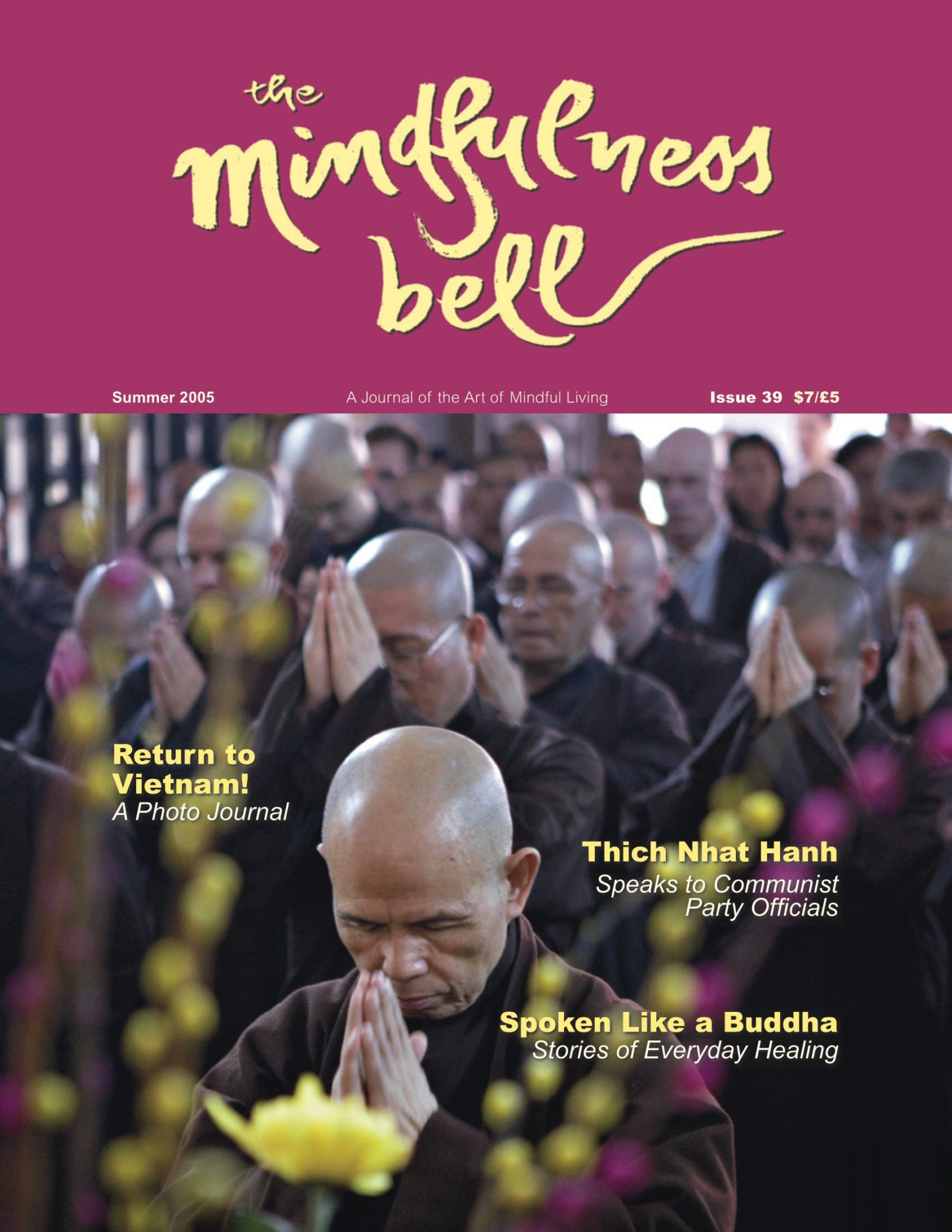If you were one of the lucky few hundred people to join Thich Nhat Hanh in his return to Vietnam after thirty-nine years in exile, this issue will spark fond memories of that journey. If, like most, you were not able to join the pilgrimage, then this issue is a way for you to participate in that adventure, to engage your senses in the deep pleasure of walking as a Sangha in the land of our spiritual ancestors.
If you were one of the lucky few hundred people to join Thich Nhat Hanh in his return to Vietnam after thirty-nine years in exile, this issue will spark fond memories of that journey. If, like most, you were not able to join the pilgrimage, then this issue is a way for you to participate in that adventure, to engage your senses in the deep pleasure of walking as a Sangha in the land of our spiritual ancestors. During the three-month visit, Thay spoke to many different groups: to Vietnamese monastics, young and old; to lay people who had been his students when he left Vietnam in 1966, and to students who had never seen him; to families, to scholars and artists, and to government officials. We have chosen to share with you a compilation of two remarkable days of teaching at the Ho Chi Minh Political Institute in Hanoi, where Thay spoke to Communist party leaders about the place of Buddhist practice in the daily life of Vietnamese people. I was fortunate to be there when Thay, bold as a lion, suggested that we all stop thinking in terms of religion and instead focus on cultivating a spiritual dimension in our lives. A spiritual dimension is needed by everyone, Thay told us, because that is where our happiness comes from.
With the help of many of the travelers, we have created a chronological journal of photos and stories. As you journey through these pages, I hope you can see the beauty of the red earth and dancing palm trees, feel the joyful welcoming in the faces of our Vietnamese friends, and feast on a small sample of the temples and stupas that generously dot the landscape.
As we anchor in the Dharma seal of impermanence, we embody the reality that we are all connected at our deepest roots, and that those who went on the journey went for all of us. Their stories are our stories; their smiles rest in all of our hearts.
Also in this issue is a special section called Spoken Like a Buddha. These stories of personal transformation come from a collection edited by Sharron Mendel and Carolyn Cleveland Schena, and were originally to be made into a book. They have generously offered to share this work with the Sangha here; you will see more of these rich and personal stories in future issues. In addition, several of our lay Dharma teachers offer concrete ways to nourish our daily practice and to question our closely held perceptions and habits. And for those of you embarking on your first retreat with Thich Nhat Hanh this summer, you may find wisdom in the words of Haven Tobias, as she shares her experiences of her first retreat.
As I listened to Thay’s teachings in Vietnam, I was reminded that our path is a simple and practical one. He encouraged us all to listen deeply, to learn to communicate lovingly, to connect with our families and our ancestors, to heal our relationships, and to live an ethical life. We are fortunate beyond measure to have a teacher who embodies these teachings. May we all be teachers for one another, living in happiness and freedom, walking with our ancestors in our true spiritual home––this breath, this moment.
Barbara Casey

